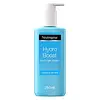What's inside
What's inside
 Key Ingredients
Key Ingredients

 Benefits
Benefits

 Concerns
Concerns

 Ingredients Side-by-side
Ingredients Side-by-side

Water
Skin ConditioningGlycerin
HumectantAlcohol Denat.
AntimicrobialC12-15 Alkyl Benzoate
AntimicrobialTapioca Starch
Butyl Methoxydibenzoylmethane
UV AbsorberOctocrylene
UV AbsorberPhenylbenzimidazole Sulfonic Acid
UV AbsorberCetearyl Alcohol
EmollientPhenoxyethanol
PreservativeBehenyl Alcohol
EmollientSodium Hydroxide
BufferingSodium Stearoyl Glutamate
CleansingEthylhexylglycerin
Skin ConditioningTrisodium EDTA
Acrylates/C10-30 Alkyl Acrylate Crosspolymer
Emulsion StabilisingCarbomer
Emulsion StabilisingXanthan Gum
EmulsifyingNiacinamide
SmoothingSodium Ascorbyl Phosphate
AntioxidantPersea Gratissima Oil
Skin ConditioningRetinyl Palmitate
Skin ConditioningTocopheryl Acetate
AntioxidantPanthenol
Skin ConditioningMaltodextrin
AbsorbentSodium Chloride
MaskingCitrus Limon Juice
Skin ConditioningFolic Acid
Skin ConditioningLycium Barbarum Fruit Extract
AstringentPunica Granatum Fruit Extract
AntioxidantGlycyrrhiza Glabra Root Extract
BleachingPantolactone
HumectantPotassium Sorbate
PreservativeCitric Acid
BufferingTocopherol
AntioxidantSorbic Acid
PreservativeAscorbic Acid
AntioxidantParfum
MaskingWater, Glycerin, Alcohol Denat., C12-15 Alkyl Benzoate, Tapioca Starch, Butyl Methoxydibenzoylmethane, Octocrylene, Phenylbenzimidazole Sulfonic Acid, Cetearyl Alcohol, Phenoxyethanol, Behenyl Alcohol, Sodium Hydroxide, Sodium Stearoyl Glutamate, Ethylhexylglycerin, Trisodium EDTA, Acrylates/C10-30 Alkyl Acrylate Crosspolymer, Carbomer, Xanthan Gum, Niacinamide, Sodium Ascorbyl Phosphate, Persea Gratissima Oil, Retinyl Palmitate, Tocopheryl Acetate, Panthenol, Maltodextrin, Sodium Chloride, Citrus Limon Juice, Folic Acid, Lycium Barbarum Fruit Extract, Punica Granatum Fruit Extract, Glycyrrhiza Glabra Root Extract, Pantolactone, Potassium Sorbate, Citric Acid, Tocopherol, Sorbic Acid, Ascorbic Acid, Parfum
Water
Skin ConditioningGlycerin
HumectantIsopropyl Palmitate
EmollientPetrolatum
EmollientDimethicone
EmollientCetyl Alcohol
EmollientPhenoxyethanol
PreservativeSodium Polyacrylate
AbsorbentCetearyl Olivate
Caprylyl Glycol
EmollientEthylhexylglycerin
Skin ConditioningSorbitan Olivate
EmulsifyingParfum
MaskingCarbomer
Emulsion StabilisingSodium Hyaluronate
HumectantSodium Hydroxide
BufferingBlue 1 Lake
Cosmetic Colorant
 Reviews
Reviews

Ingredients Explained
These ingredients are found in both products.
Ingredients higher up in an ingredient list are typically present in a larger amount.
Carbomer is a polymer of acrylic acid. Its main role is to create a gel consistency.
A high amount of carbomer can cause pilling or balling up of products. Don't worry, most products contain 1% or less of carbomer.
Ethylhexylglycerin (we can't pronounce this either) is commonly used as a preservative and skin softener. It is derived from glyceryl.
You might see Ethylhexylglycerin often paired with other preservatives such as phenoxyethanol. Ethylhexylglycerin has been found to increase the effectiveness of these other preservatives.
Glycerin is already naturally found in your skin. It helps moisturize and protect your skin.
A study from 2016 found glycerin to be more effective as a humectant than AHAs and hyaluronic acid.
As a humectant, it helps the skin stay hydrated by pulling moisture to your skin. The low molecular weight of glycerin allows it to pull moisture into the deeper layers of your skin.
Hydrated skin improves your skin barrier; Your skin barrier helps protect against irritants and bacteria.
Glycerin has also been found to have antimicrobial and antiviral properties. Due to these properties, glycerin is often used in wound and burn treatments.
In cosmetics, glycerin is usually derived from plants such as soybean or palm. However, it can also be sourced from animals, such as tallow or animal fat.
This ingredient is organic, colorless, odorless, and non-toxic.
Glycerin is the name for this ingredient in American English. British English uses Glycerol/Glycerine.
Learn more about GlycerinParfum is a catch-all term for an ingredient or more that is used to give a scent to products.
Also called "fragrance", this ingredient can be a blend of hundreds of chemicals or plant oils. This means every product with "fragrance" or "parfum" in the ingredients list is a different mixture.
For instance, Habanolide is a proprietary trade name for a specific aroma chemical. When used as a fragrance ingredient in cosmetics, most aroma chemicals fall under the broad labeling category of “FRAGRANCE” or “PARFUM” according to EU and US regulations.
The term 'parfum' or 'fragrance' is not regulated in many countries. In many cases, it is up to the brand to define this term.
For instance, many brands choose to label themselves as "fragrance-free" because they are not using synthetic fragrances. However, their products may still contain ingredients such as essential oils that are considered a fragrance by INCI standards.
One example is Calendula flower extract. Calendula is an essential oil that still imparts a scent or 'fragrance'.
Depending on the blend, the ingredients in the mixture can cause allergies and sensitivities on the skin. Some ingredients that are known EU allergens include linalool and citronellol.
Parfum can also be used to mask or cover an unpleasant scent.
The bottom line is: not all fragrances/parfum/ingredients are created equally. If you are worried about fragrances, we recommend taking a closer look at an ingredient. And of course, we always recommend speaking with a professional.
Learn more about ParfumPhenoxyethanol is a preservative that has germicide, antimicrobial, and aromatic properties. Studies show that phenoxyethanol can prevent microbial growth. By itself, it has a scent that is similar to that of a rose.
It's often used in formulations along with Caprylyl Glycol to preserve the shelf life of products.
Sodium Hydroxide is also known as lye or caustic soda. It is used to adjust the pH of products; many ingredients require a specific pH to be effective.
In small amounts, sodium hydroxide is considered safe to use. However, large amounts may cause chemical burns due to its high alkaline.
Your skin has a natural pH and acid mantle. This acid mantle helps prevent harmful bacteria from breaking through. The acid mantle also helps keep your skin hydrated.
"Alkaline" refers to a high pH level. A low pH level would be considered acidic.
Learn more about Sodium HydroxideWater. It's the most common cosmetic ingredient of all. You'll usually see it at the top of ingredient lists, meaning that it makes up the largest part of the product.
So why is it so popular? Water most often acts as a solvent - this means that it helps dissolve other ingredients into the formulation.
You'll also recognize water as that liquid we all need to stay alive. If you see this, drink a glass of water. Stay hydrated!
Learn more about Water